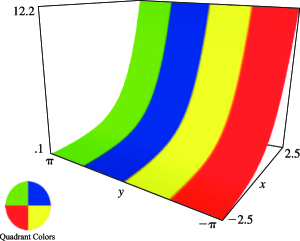variation of real or complex functions
(0.025 seconds)
1—10 of 603 matching pages
1: 1.4 Calculus of One Variable
…
►
Functions of Bounded Variation
… ► … ►Lastly, whether or not the real numbers and satisfy , and whether or not they are finite, we define by (1.4.34) whenever this integral exists. This definition also applies when is a complex function of the real variable . …2: 10.40 Asymptotic Expansions for Large Argument
…
►
10.40.6
►
10.40.7
…
►
§10.40(iii) Error Bounds for Complex Argument and Order
… ►where denotes the variational operator (§2.3(i)), and the paths of variation are subject to the condition that changes monotonically. … ►
10.40.12
…
3: 8.23 Statistical Applications
§8.23 Statistical Applications
…4: 10.77 Software
…
►
§10.77(iv) Bessel Functions–Integer or Half-Integer Order and Complex Arguments, including Kelvin Functions
… ►§10.77(v) Bessel Functions–Real Order and Complex Argument (including Hankel Functions)
… ►§10.77(vii) Bessel Functions–Complex Order and Real Argument
… ►§10.77(viii) Bessel Functions–Complex Order and Argument
…5: 14.31 Other Applications
…
►
§14.31(iii) Miscellaneous
… ►Legendre functions of complex degree appear in the application of complex angular momentum techniques to atomic and molecular scattering (Connor and Mackay (1979)). …6: 30.6 Functions of Complex Argument
7: 12.8 Recurrence Relations and Derivatives
8: 5.23 Approximations
…
►


